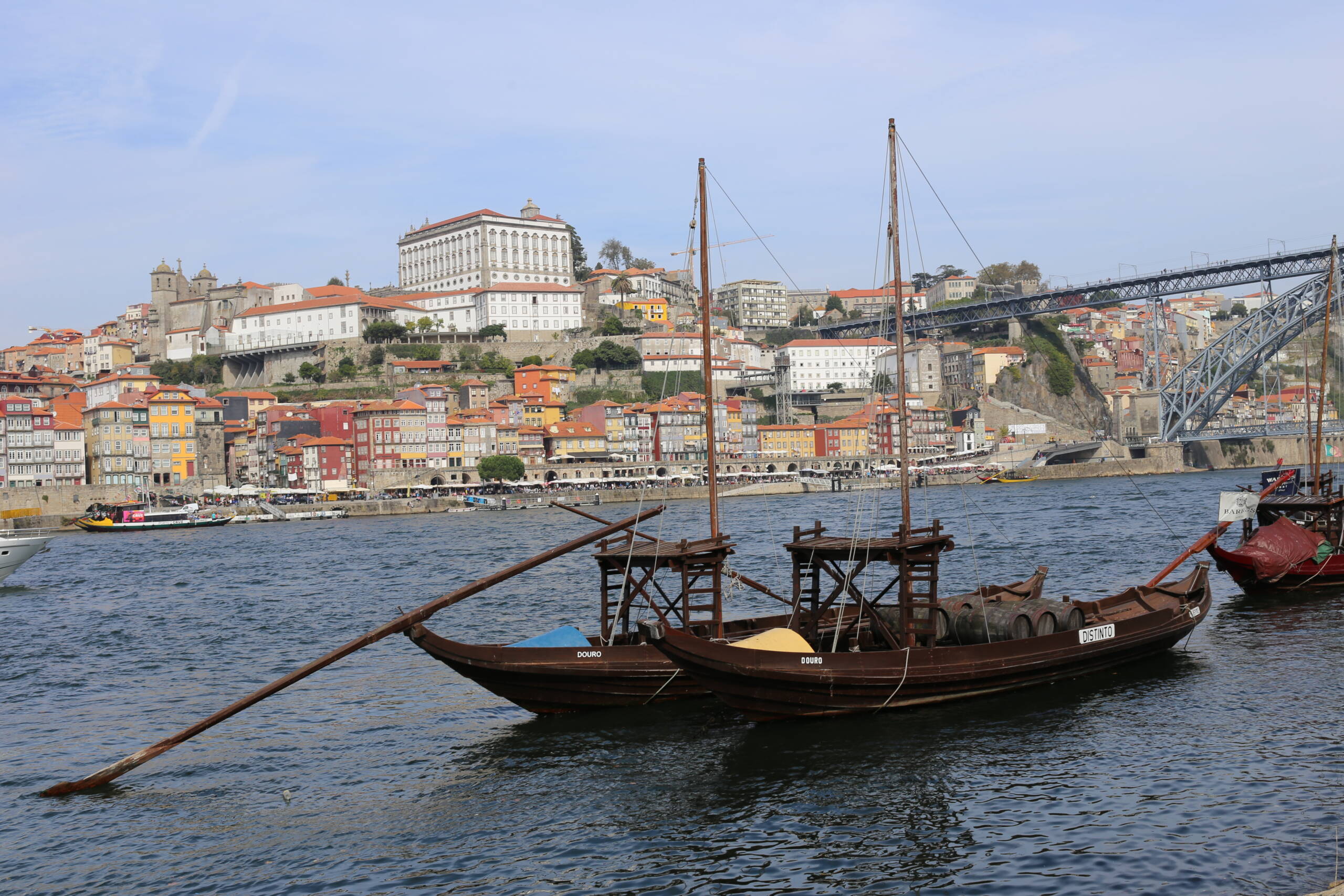There are certain images that define a city so completely that they seem stitched into its very identity. For Porto, it’s this: the Douro River rolling by, the graceful arc of the Dom Luís I Bridge spanning the banks, and the old rabelo boats bobbing in the water with their cargo of wooden barrels—silent reminders of the centuries-old port wine trade. The scene feels timeless, like a postcard that hasn’t changed in a hundred years, except now it’s filled with tourists drifting along the quayside cafés and snapping photos where merchants once hauled barrels ashore.
The rabelos, with their long, sweeping oars, were never built for speed but for strength, guiding the precious port wine downriver from the terraced vineyards of the Douro Valley. Today, they float as emblems, no longer working vessels but cultural storytellers. Their dark wooden hulls, curved like the ribs of some mythical sea creature, stand out against the sparkling blue of the river, carrying not just barrels but the entire memory of Porto’s lifeblood industry. When you see them rocking gently in the current, you can almost hear the echoes of old river songs, the shouts of sailors steering them against the currents, the creak of timber under weight.

And then there’s the backdrop—the Ribeira district rising like a colorful amphitheater. Every house seems painted in defiance of monotony: ochre, rose, teal, sunflower yellow, all pressed tightly together as though leaning on each other for balance. Laundry flutters from wrought-iron balconies, cafés spill onto cobbled lanes, and the whole hillside hums with a lived-in warmth that resists the idea of Porto being just another tourist postcard. Above it all, the austere white façade of the former Bishop’s Palace crowns the hill, a sharp contrast to the playful colors below, a reminder of Porto’s deep entanglement with faith, power, and trade.
The Dom Luís I Bridge ties it together like punctuation at the end of a sentence. Its iron skeleton, designed by a disciple of Gustave Eiffel, is both practical and poetic. Standing on its upper deck, you feel suspended between worlds—the rugged Atlantic pulling westward, the lush Douro Valley drawing you eastward, and Porto itself holding you firmly in the middle, whispering stories of merchants, sailors, monks, and winemakers. At sunset, when the light softens and the river turns molten gold, the whole tableau transforms into something that feels less like a city and more like a painting.
Porto doesn’t seduce you with perfection. It charms you with its layered imperfections—walls peeling with history, streets that zigzag unpredictably, the mingling of grandeur and grit. Yet, when you stand on the riverbank and take in this scene—the boats, the bridge, the hillside ablaze with color—you realize this is Porto distilled: proud, resilient, and forever tied to the flow of the Douro.
Leave a Reply